AWS Certified Developer - Associate
AWS Fundamentals
Route53 Basics Demo
In this lesson, we demonstrate how to use AWS Route 53—a fully managed DNS service—to register a domain and configure its DNS settings. Route 53 not only lets you register new domains but also simplifies DNS management by keeping everything in one place. This streamlined approach is ideal for developers and solutions architects who want an integrated domain and DNS management solution.
Accessing AWS Route 53
First, log in to the AWS Management Console and search for "Route 53." Open the service and navigate to the Domains section, then click on Register Domain. If you haven’t registered any domains before, you will see an empty list:
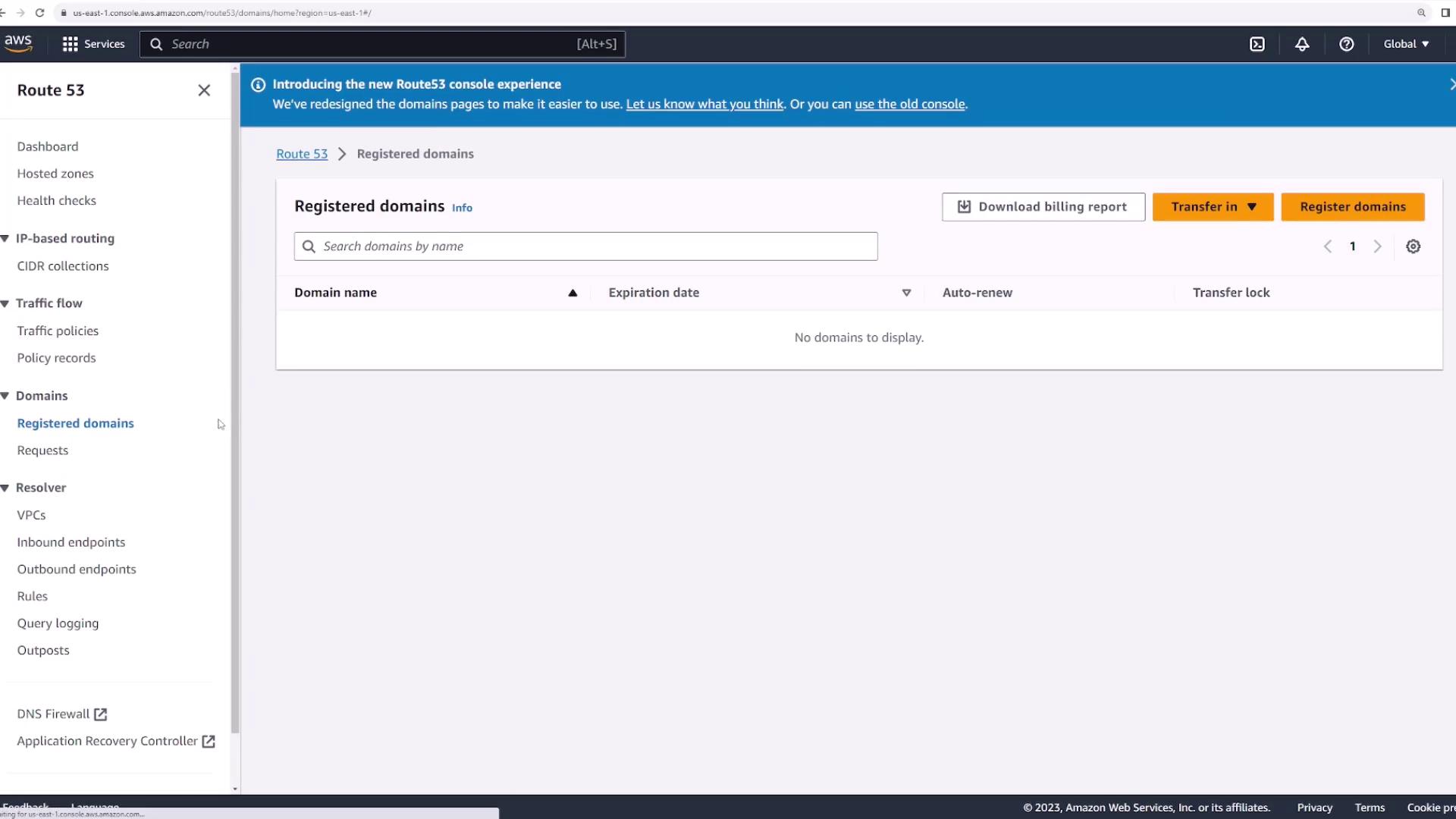
At this point, you have two main options:
- Transfer an Existing Domain: Migrate a domain registered with a third-party provider.
- Register a New Domain: Create a new registration directly within AWS.
Registering a New Domain
To register a new domain, start by checking its availability. For the demo, we will use a sample domain name such as "kodeklouddemo123.com." When you search for this name, AWS Route 53 displays pricing options. For example, the .com domain might be available for $13 per year, with additional alternatives like a .link version. Select "kodeklouddemo123.com" and click Proceed to checkout.
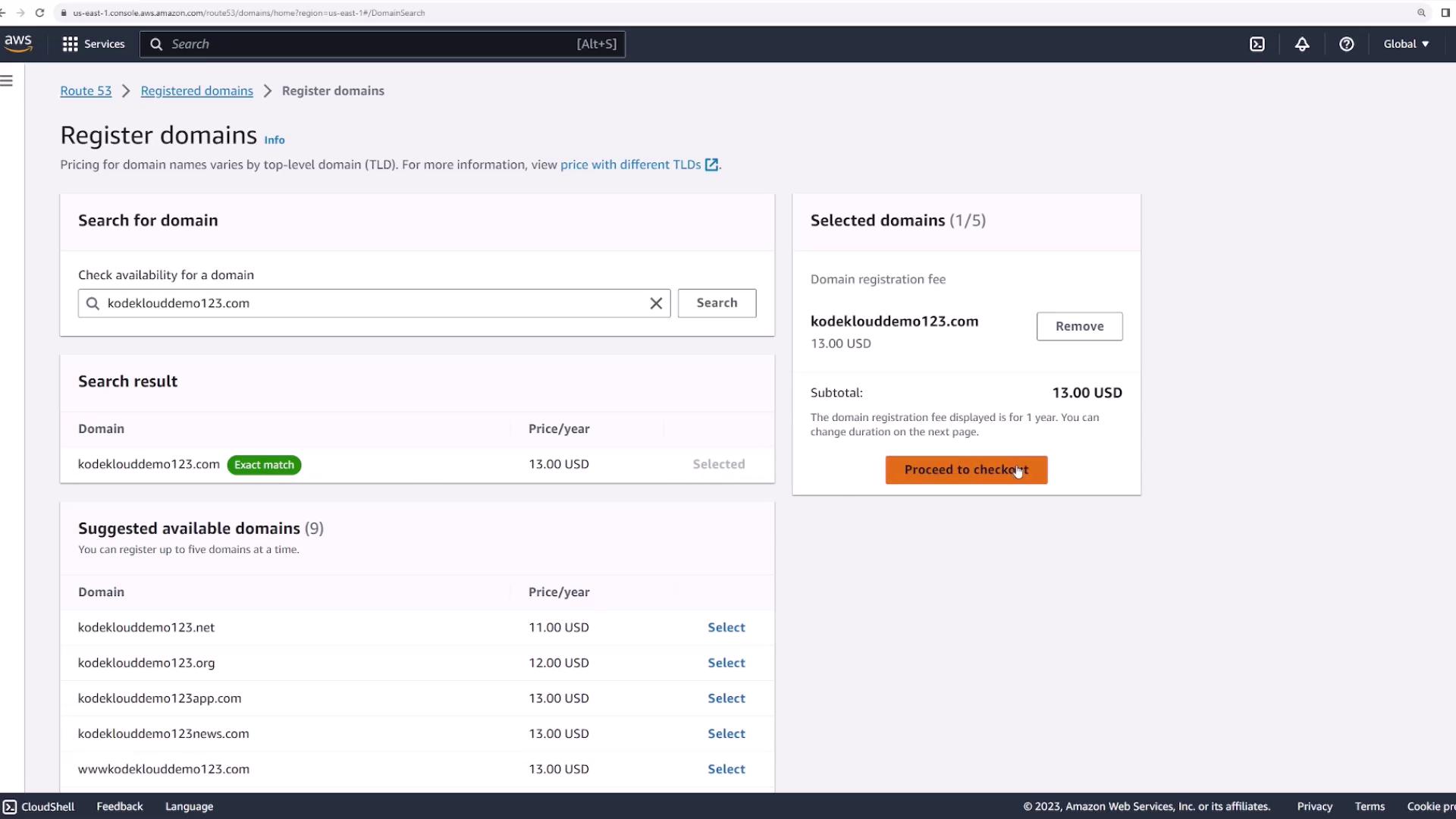
Next, you will see an option for auto-renewal. Enabling auto-renew ensures your domain remains active without interruption by automatically extending the registration annually:
Auto-Renew Recommendation
It is recommended to keep auto-renew enabled to avoid potential downtime due to missed renewals.
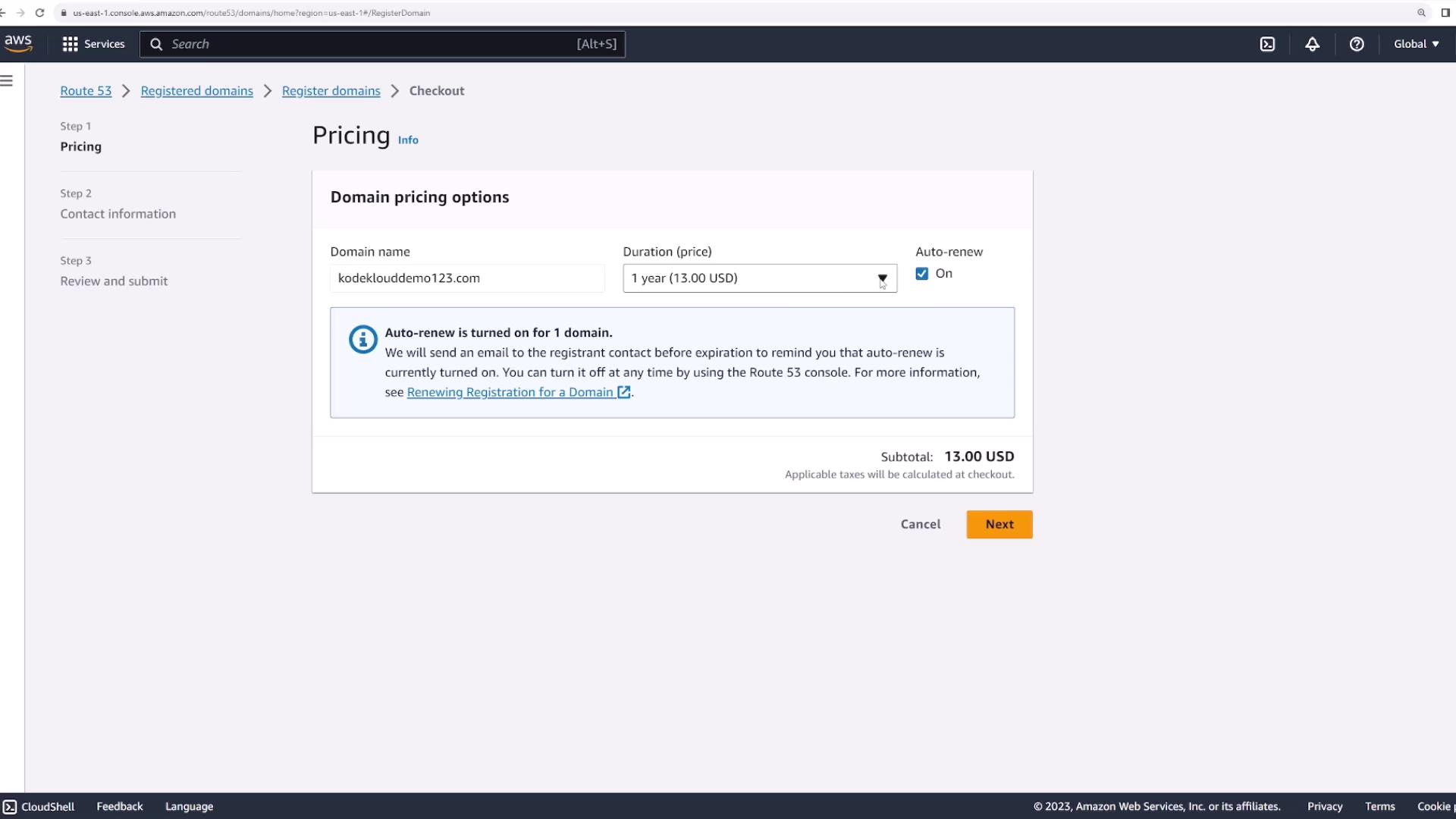
Providing Contact Information
After setting your renewal preferences, enter the required contact information and enable privacy protection to secure your data. Review the registration summary, which shows any applicable management fees. Note that when you register a domain using Route 53, an associated hosted zone is automatically created (this may incur a small additional charge).
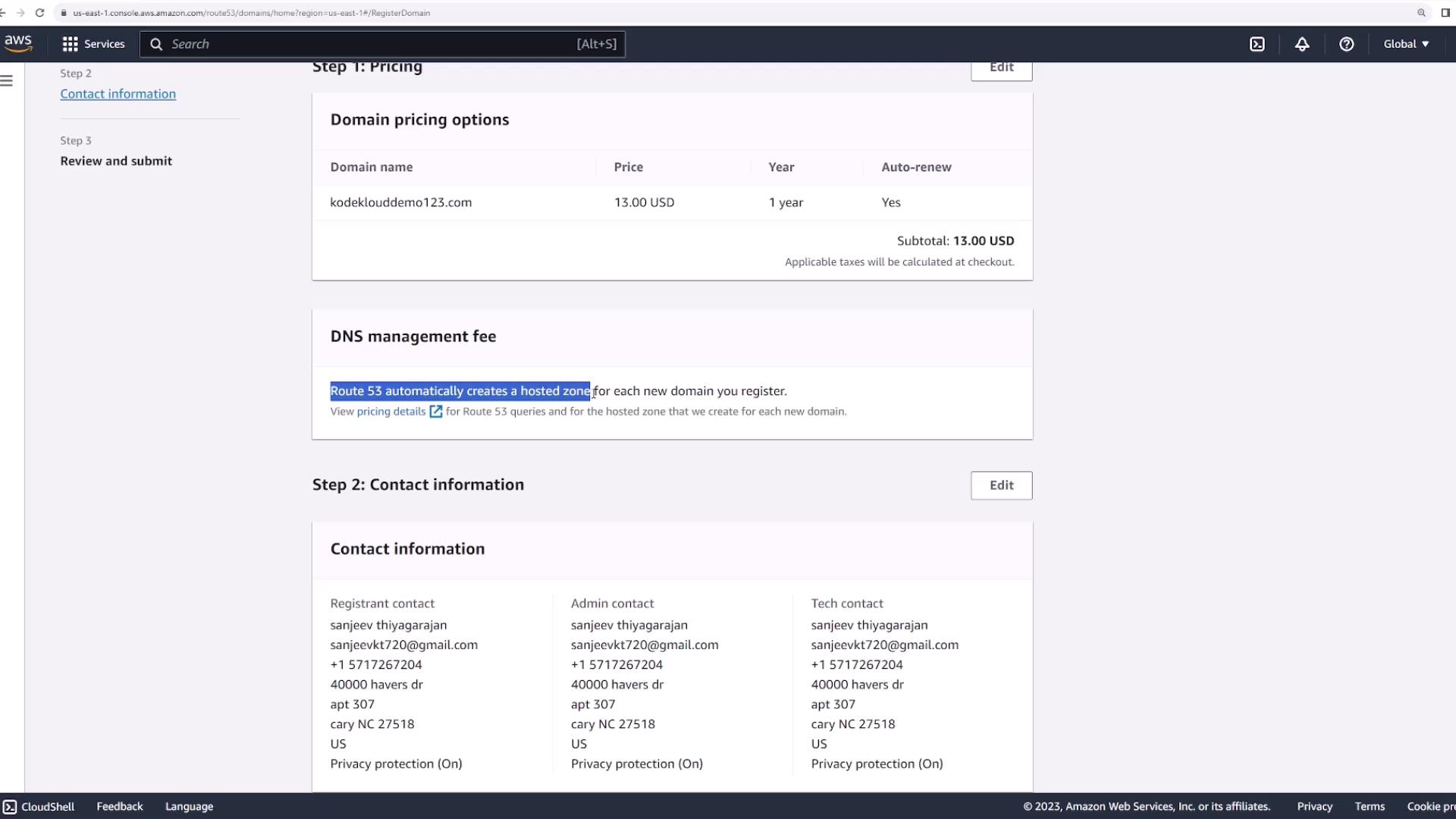
After reviewing your information and accepting the terms and conditions, submit your registration. You will receive email confirmations that update you on the status of your registration. Once the process is complete, the new domain will appear in the Registered domains list along with details like the expiration date and auto-renew status.
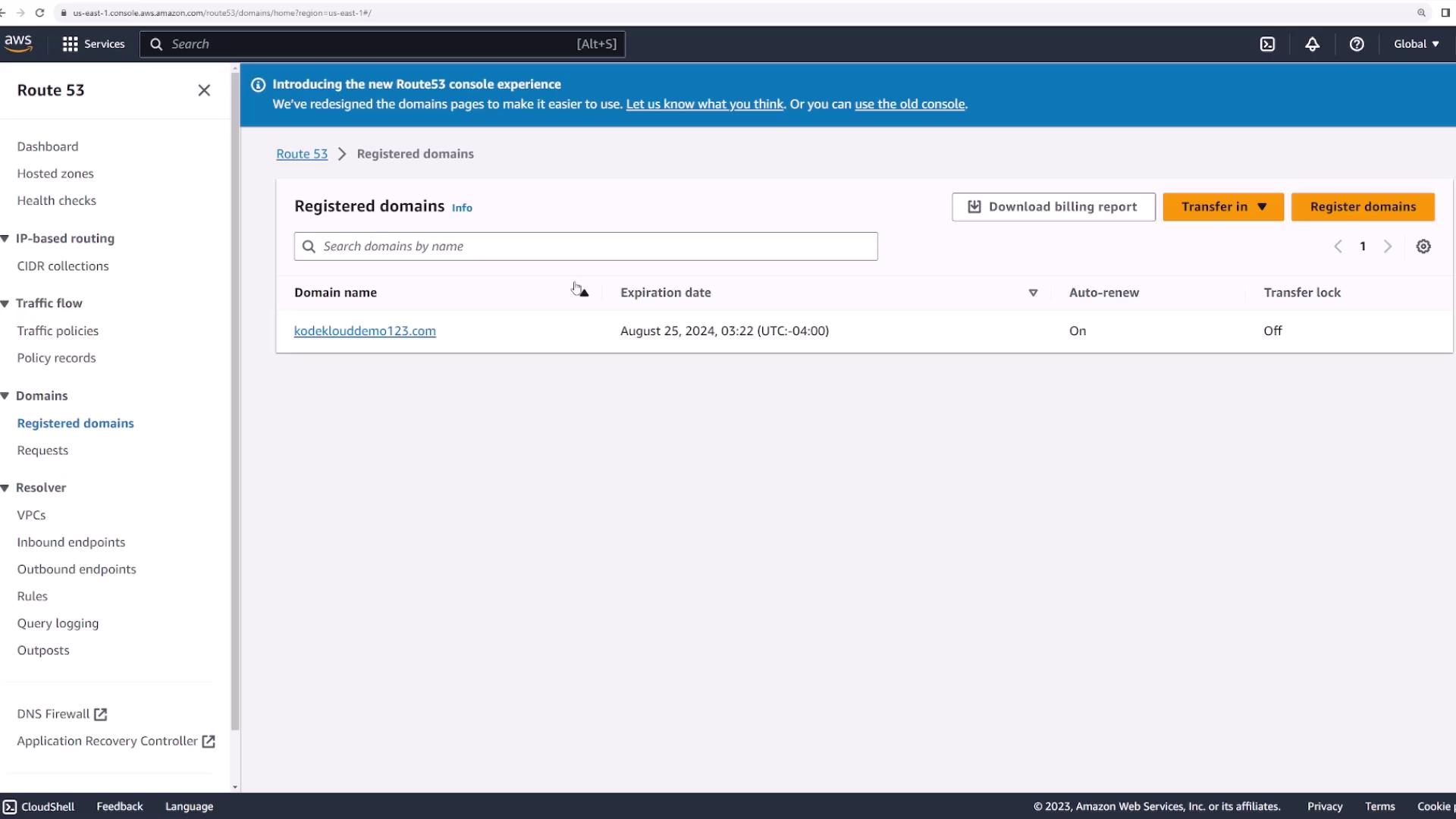
Managing Hosted Zones and DNS Records
Click on your registered domain in the Route 53 console for additional details, including registration/expiration dates, contact information, and the four name servers allocated for your hosted zone. AWS automatically creates a hosted zone for your domain, which stores all associated DNS records.
Navigate to the Hosted zones section, and you will see a hosted zone for "kodeklouddemo123.com." Clicking on the hosted zone reveals the name servers and other DNS record details:
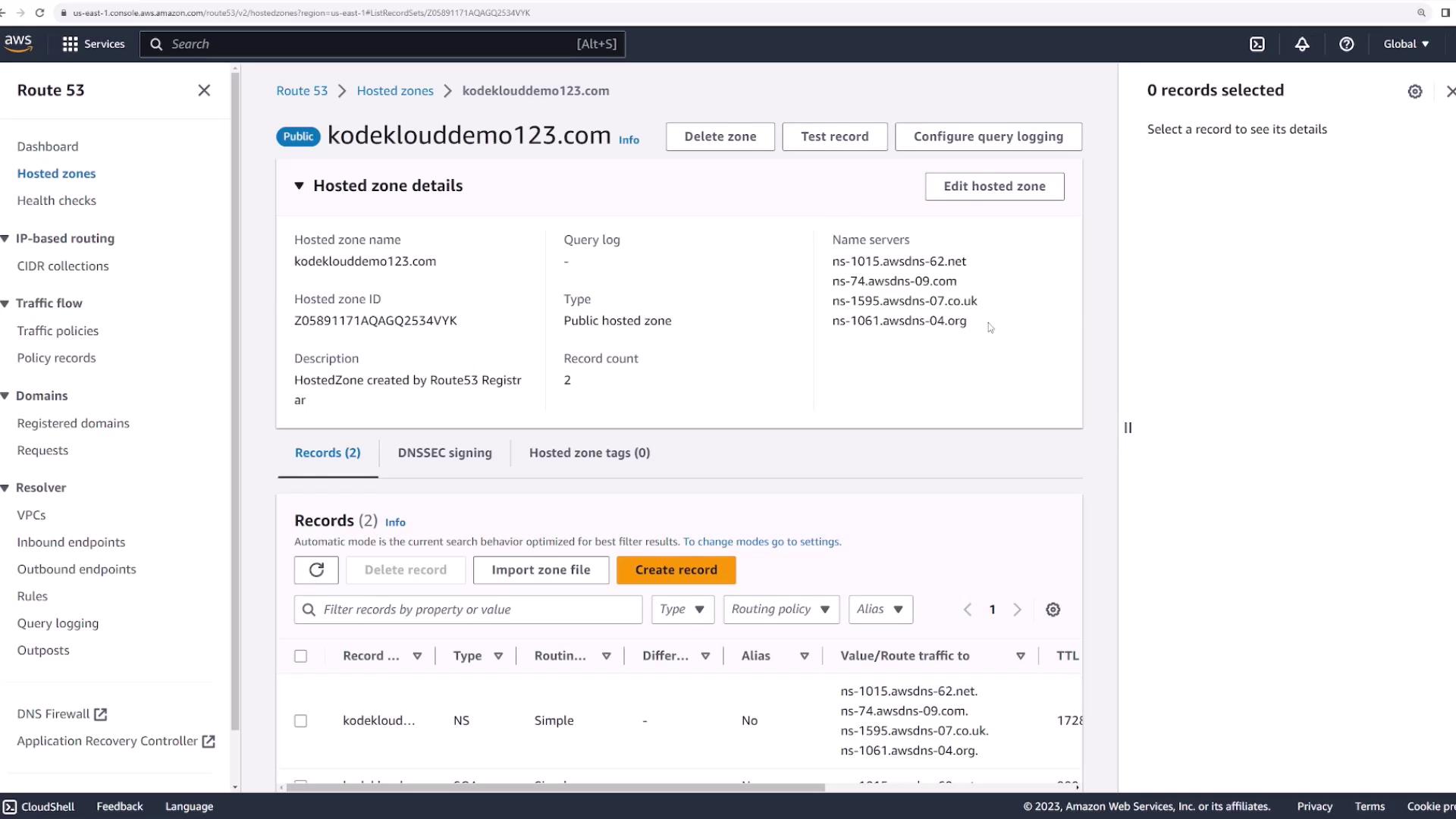
Creating DNS Records
AWS automatically sets up basic DNS records in the hosted zone. To add a new record, click the Create records button. For example, to map your domain or subdomain to a web server's IP address, you can create an A (Address) record.
- Root Domain: Leave the record name empty (or use "@") to point "kodeklouddemo123.com" to your web server.
- Subdomain: Enter a value like "www" to map "www.kodeklouddemo123.com" to the IP.
Type the web server's public IP address in the Value field. You can leave the Time to Live (TTL) and other advanced options at their default values. Once all details are in place, create the record.
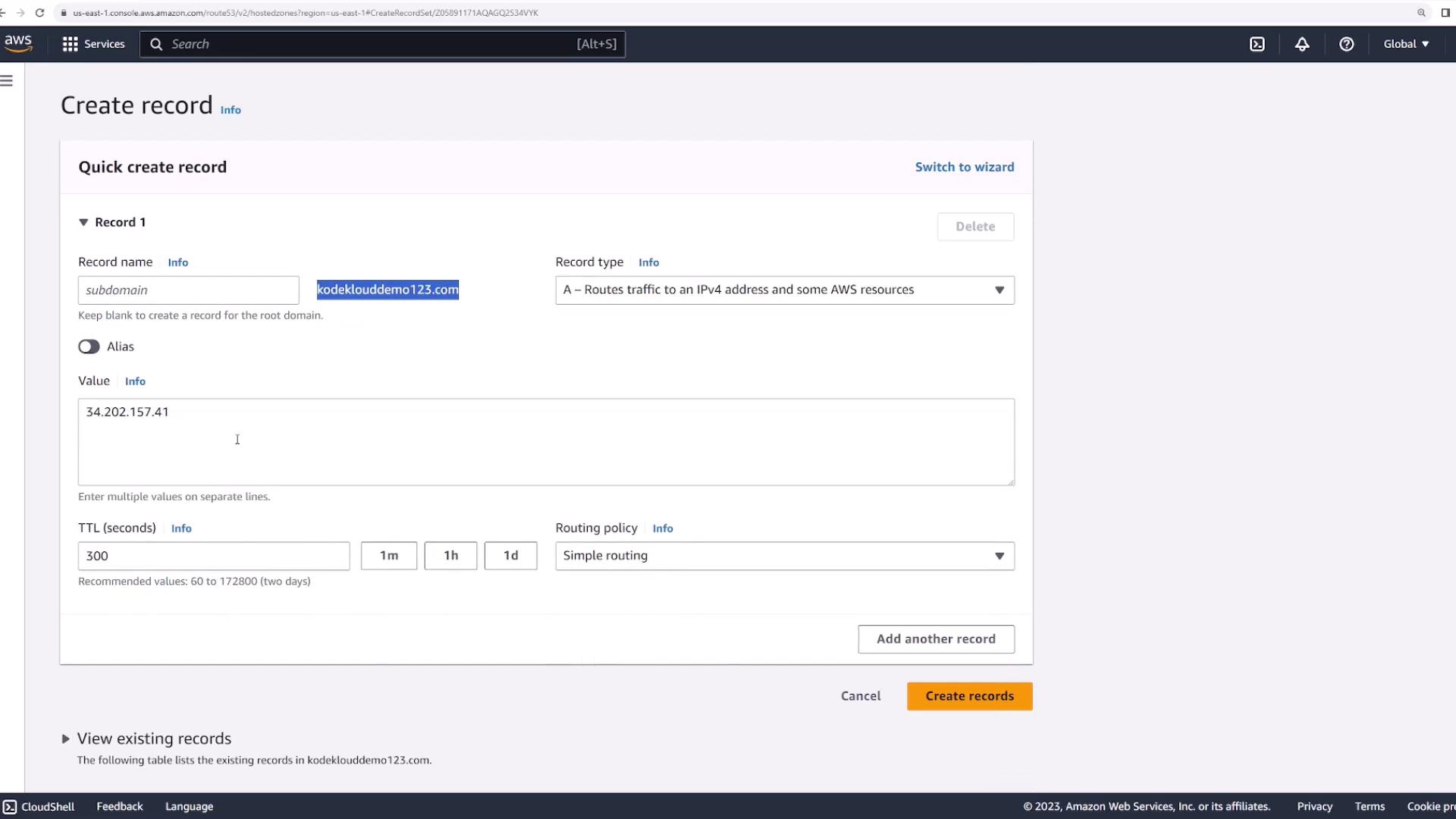
Route 53 typically propagates DNS changes within 60 seconds. You can monitor the update progress using the View status button:
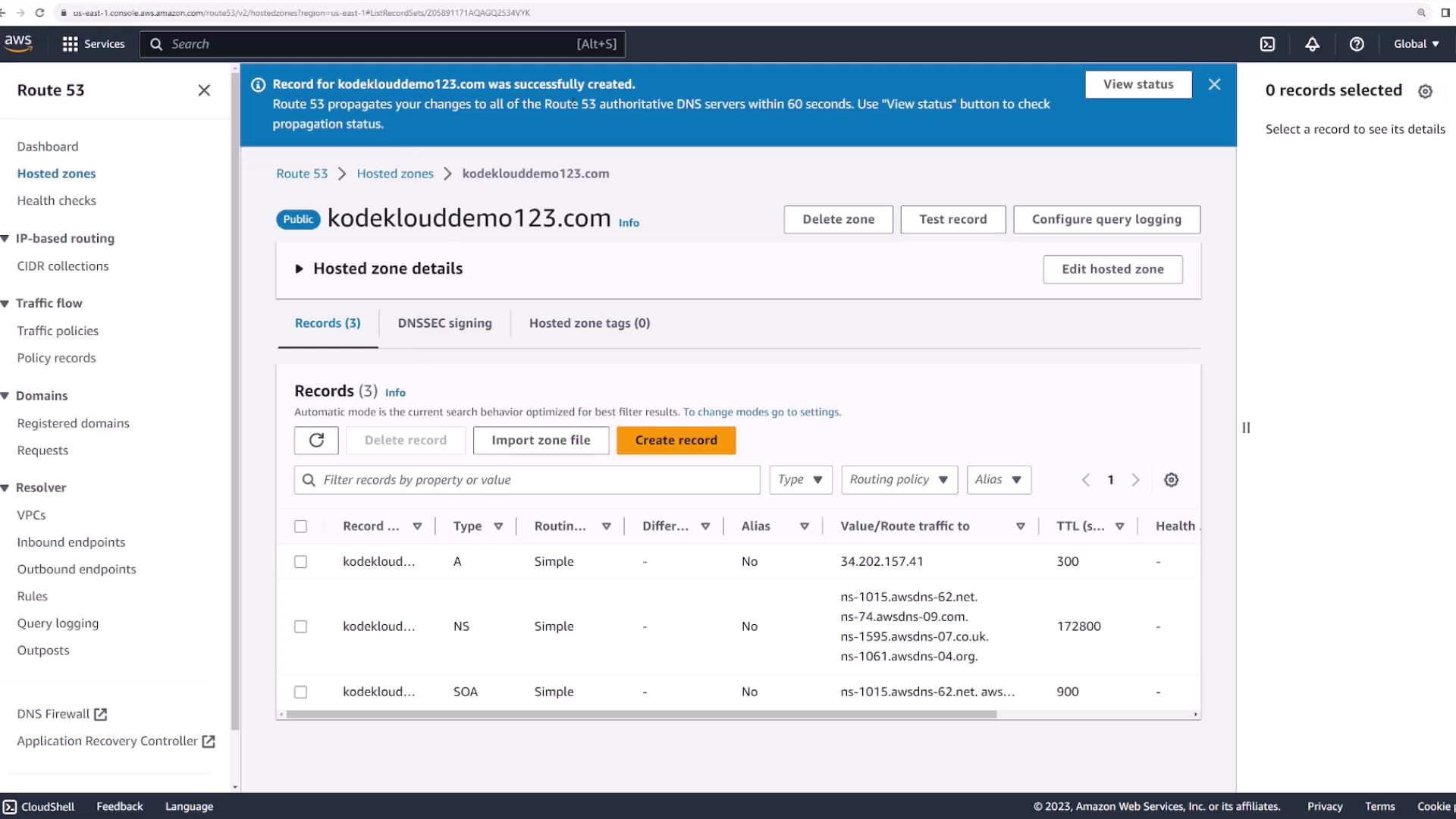
After about a minute, refresh the page to ensure the changes have propagated. Once complete, entering "kodeklouddemo123.com" in your browser should navigate you to your web server.
Conclusion
AWS Route 53 streamlines domain registration and DNS management by merging both processes into a single, easy-to-use interface. By automatically creating a hosted zone during domain registration, AWS simplifies the subsequent management of DNS records. This integrated solution is particularly valuable for professionals preparing for the AWS Solutions Architect Associate Certification.
Happy learning!
Watch Video
Watch video content